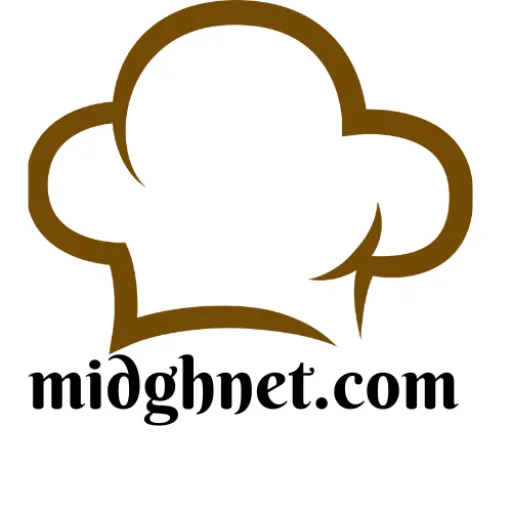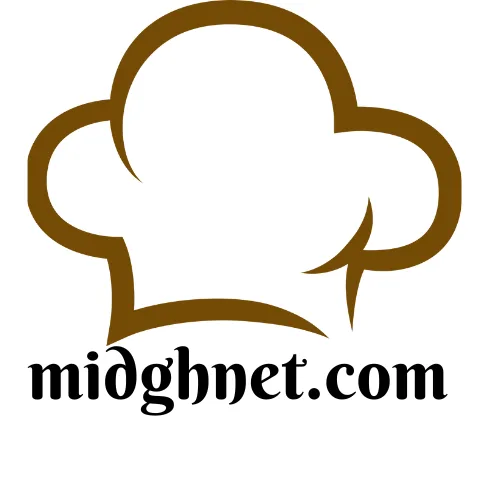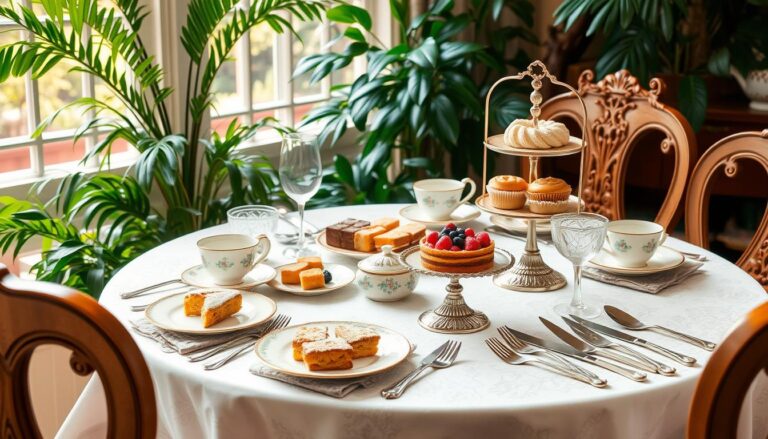The Best Fluffy Pancakes recipe you will fall in love with. Full of tips and tricks to help you make the best pancakes.
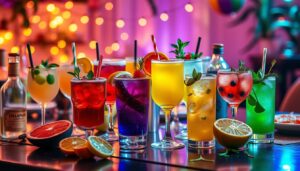
As the music gets louder and the laughter grows, you might wonder about the drinks that make the party fun. The history of “giggle juice” is tied to American culture. It goes back to the Victorian era and the secret slang of the time.
Then, during the Prohibition era, speakeasies became a big part of the scene. These hidden bars and secret drinks were all about having fun without being seen.
Table of Contents
The Origins of Party Drinks in American Culture
American drinking culture started long before Prohibition. Taverns and saloons were key places for people to meet. They were more than just places to drink; they were the heart of community life.
People went there to socialize, do business, and enjoy drinks. These places were filled with the sounds of laughter and the smell of liquor.
Pre-Prohibition Era Drinking Culture
In the pre-Prohibition days, “teetotaler” was a common term. It meant someone who didn’t drink. But most people loved to drink together.
Places called “blind pigs” and “blind tigers” were where people found their favorite drinks. These spots were popular for those looking for a good time.
Evolution of Social Drinking Customs
By the late 19th century, drinking spots were getting fancier. Speakeasies, or “juice joints,” became secret places for drinking during Prohibition. People who went there a lot were called “boozehounds.”
The Birth of Cocktail Culture
The late 19th century was a big change for drinking in America. This is when the cocktail was born. Mixologists started making new drinks with different ingredients.
This was the start of the modern party drink. It led to the growth of cocktail culture. This culture would shape the Roaring Twenties.
“Ombibulous, a term coined by H.L. Mencken in 1920, described his love for alcohol.”
The Prohibition Era and the Rise of Speakeasies
During the Prohibition era (1920-1933), a ban on alcohol led to a secret nightlife. Speakeasies, or “blind pigs,” became hidden bars. They served nightlife beverages and fun libations to those who wanted them.
These secret spots were often hidden in plain sight. They looked like soda fountains or barbershops. Inside, they were dimly lit and quirky, showing the spirit of their owners. To get in, you had to whisper your password, adding to the mystery.
“In the 1920s, there were approximately 32,000 speakeasies in New York City alone.”
Speakeasies became more common as people wanted to enjoy nightlife beverages and fun libations. These secret places offered a peek into a world of fun, hidden from the law.
Understanding Giggle Juice: From Slang to Social Phenomenon
The term “giggle juice” started in the Victorian era as a slang for alcohol. During Prohibition, people used creative names like “hooch” and “moonshine” to hide their drinking. These names have shaped our drinking culture, still used today.
Victorian-Era Drinking Terminology
Grant Barrett, a top slang expert, says the Victorian era brought many colorful drink names. Terms like “giggle juice” let people express themselves freely, challenging formal rules.
Popular Nicknames for Illicit Beverages
- Hooch
- Moonshine
- Bathtub gin
- Speakeasy
In the Prohibition era, people used secret names for alcohol. “Hooch” and “moonshine” hid the true nature of the drinks, showing the secret nature of drinking back then.
Cultural Impact on Modern Drinking Terms
Today, we still see the effects of these old slang terms in our drinking culture. Some terms, like “giggle juice,” have stayed relevant. This shows how old drinking traditions keep shaping our language and social interactions.
| Slang Term | Definition | Era |
|---|---|---|
| Giggle Juice | Alcoholic Beverage | Victorian Era |
| Hooch | Illicit Alcohol | Prohibition Era |
| Moonshine | Illegal Homemade Liquor | Prohibition Era |
| Bathtub Gin | Homemade Gin | Prohibition Era |
| Speakeasy | Illicit Drinking Establishment | Prohibition Era |
The Art of Modern Speakeasy Establishments
In the late 1990s, speakeasy-style bars made a comeback. Milk & Honey, which opened in New York City in 1999, was a pioneer. It had a hidden entrance, unique cocktails, and a special atmosphere. These bars offer a nostalgic and mysterious vibe, different from regular nightlife beverages and bars.
These places are alluring because they’re secret and detailed. You might find hidden doors or secret passwords to get in. Inside, you’ll find dim lights, old furniture, and bartenders making special cocktails with top-notch spirits and homemade ingredients.
The staff at these places are dedicated to making your visit special. They know a lot about Prohibition and making drinks. Plus, you might see live music or burlesque shows, making your night even more memorable.
The comeback of speakeasy bars has sparked a new interest in nightlife beverages and cocktails. It has also inspired many bartenders and entrepreneurs. These bars offer a unique escape, perfect for those who want a taste of history and a bit of rebellion.

From Blind Pigs to Contemporary Cocktail Lounges
After Prohibition, speakeasies turned into hidden bars and cocktail lounges. These places honor the rebellious spirit of the old while offering a unique drinking experience. They mix nostalgia with exclusivity for those who want something special.
Evolution of Hidden Bars
Today’s speakeasy-style bars are far from the “blind pigs” of the past. They have secret entrances, like hidden doors behind bookshelves. Or they look like normal places but hide amazing fun libations inside.
These spots are full of mystery and excitement. They attract people who love the thrill of finding a secret party drinks spot.
Notable Modern Speakeasies
- The Natural Philosopher in London is hidden in a Mac repair shop. It offers a secret cocktail experience with a scientific twist.
- Cahoots in London takes you back in time with its train carriage theme. It celebrates the 1940s travel era and underground culture.
- Please Don’t Tell in New York City is found through a hot dog joint’s phone booth. It serves expert cocktails in a cozy, secret spot.
Design Elements and Atmosphere
Modern speakeasies focus on creating a real atmosphere. They have hidden entrances, old-time decor, and special fun libations. The service is top-notch, aiming to take you back in time.
The goal is to mix the thrill of the past with the art of making great party drinks.
These places combine old charm with new design and cocktail skills. They offer a unique experience that appeals to those who love history and great drinks.
Popular Party Drinks and Their Origins
Alcoholic drinks have always been a big part of celebrations and social events. Drinks like the Margarita and Martini are loved worldwide. They have deep histories and meanings.
The Margarita is a key part of Cinco de Mayo. It’s made with tequila, lime juice, and orange liqueur. Its origins are unclear, but it’s been a hit since the 1930s or 1940s. Its mix of sweet, sour, and salty makes it a favorite at parties.
The Mojito comes from Cuba. It’s a mix of rum, lime juice, sugar, and soda water. It’s a refreshing drink with a history dating back to the 16th century. Originally, it was a medicinal drink.
| Drink | Origin | Key Ingredients |
|---|---|---|
| Margarita | Mexico | Tequila, lime juice, orange liqueur |
| Mojito | Cuba | Rum, lime juice, sugar, soda water |
| Martini | United States | Gin, vermouth |
| Bloody Mary | United States | Vodka, tomato juice, spices |
| Cosmopolitan | United States | Vodka, triple sec, cranberry juice, lime |
The Martini and Bloody Mary are just a few examples of drinks with rich histories. Whether you’re on a beach or at a party, these drinks bring joy to people everywhere.
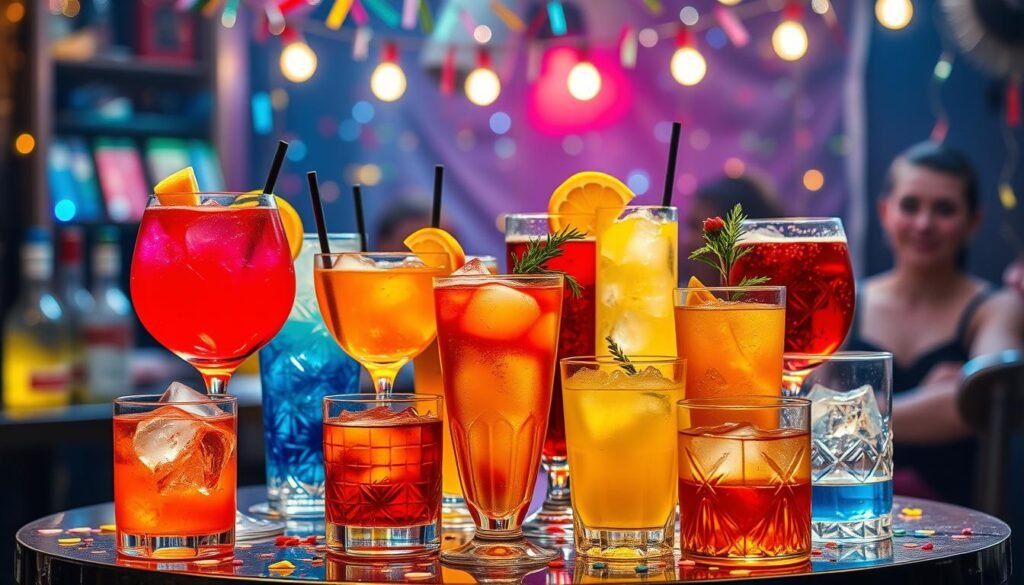
The Role of Celebration Beverages in Social Gatherings
Celebration beverages are key in social gatherings, often linked to holidays or events. For instance, Cinco de Mayo celebrates Mexican culture with traditional food and drinks. The drinks at events show off cultural traditions, personal tastes, and mixology trends.
Cultural Significance
Some drinks are closely tied to celebrations or cultural traditions. Giggle juice and booze are central in social events, from festive cocktails to mocktails. These drinks help connect with heritage, celebrate shared moments, and build community.
Modern Party Drink Trends
- Mocktails, like the Classic Margarita and Paloma, are popular for those who don’t drink alcohol.
- Unique mocktails, such as the Watermelon & Chilli Margarita, mix sweet and savory flavors for a twist on traditional drinks.
- Lyre’s non-alcoholic spirits are becoming a hit for making fancy mocktails at parties.
Social Impact of Festive Beverages
The presence of giggle juice and booze can greatly impact celebrations. These drinks can make the party more fun and help people connect. But, it’s important to drink responsibly and think about health and safety, especially for older adults.
| Tailgating Drink Preferences | Creative Cocktail Ideas | Jello Shot Suggestions |
|---|---|---|
|
|
|
Non-Alcoholic Alternatives: Modern Mocktail Movement
The modern mocktail movement is changing how we enjoy fun drinks at parties. Brands like Lyre’s make non-alcoholic spirits that taste like real drinks. This lets you make fancy mocktails without the alcohol.
You can now make drinks like alcohol-free Margaritas and Mojitos. These options are great for those who want to stay healthy or don’t drink alcohol. They let everyone join in the fun of drinking.
Gruvi DrySecco is leading the non-alcoholic wine trend, with over 1,000 5-star reviews. Gruvi Sangria won a gold medal at the International Wine and Spirits Competition. These achievements show it’s a top choice for non-alcoholic wine.
This movement lets you have fun at parties without the alcohol. It’s perfect for those looking for new drinks or just want to try something different. The variety of non-alcoholic drinks makes any celebration better.
FAQ
What is the history behind the term “giggle juice”?
“Giggle juice” is a slang for alcohol that started in the Victorian era. It became popular in the U.S. during Prohibition. It shows how drinking culture and social norms have changed over time.
How did drinking culture in the United States evolve from pre-prohibition to the modern day?
Drinking in America began with taverns and saloons. Later, cocktail culture emerged, bringing mixed drinks and creative recipes. This set the stage for today’s party drinks.
What was the impact of Prohibition on American drinking culture?
Prohibition (1920-1933) led to speakeasies, or “blind pigs.” These secret bars served illegal alcohol, often disguised as legitimate businesses. They showed the political and entrepreneurial spirit of their times.
How have terms like “giggle juice” and “hooch” influenced modern drinking culture?
Terms like “giggle juice” and “hooch” from the Victorian and Prohibition eras still shape our drinking culture today. They show the lasting impact of old slang on modern drinking.
What is the significance of modern speakeasy-style bars?
Speakeasy-style bars, inspired by the Prohibition era, became popular again in the late 1990s. They offer a unique experience with hidden entrances, old-time decor, and craft cocktails.
How have party drinks evolved, and what are some popular examples?
Party drinks have changed, with many cocktails having interesting origins. The Margarita and Mojitos are popular, tied to holidays like Cinco de Mayo. Each has its own history and cultural importance.
What is the role of celebration beverages in social gatherings?
Drinks at social events reflect cultural traditions and personal tastes. They show the current trends in mixology and add to the celebration.
What is the modern mocktail movement, and how does it cater to non-alcoholic drinkers?
The mocktail movement offers drinks for those who don’t drink alcohol. Brands like Lyre’s make non-alcoholic spirits for mocktails like alcohol-free Margaritas and Mojitos.
